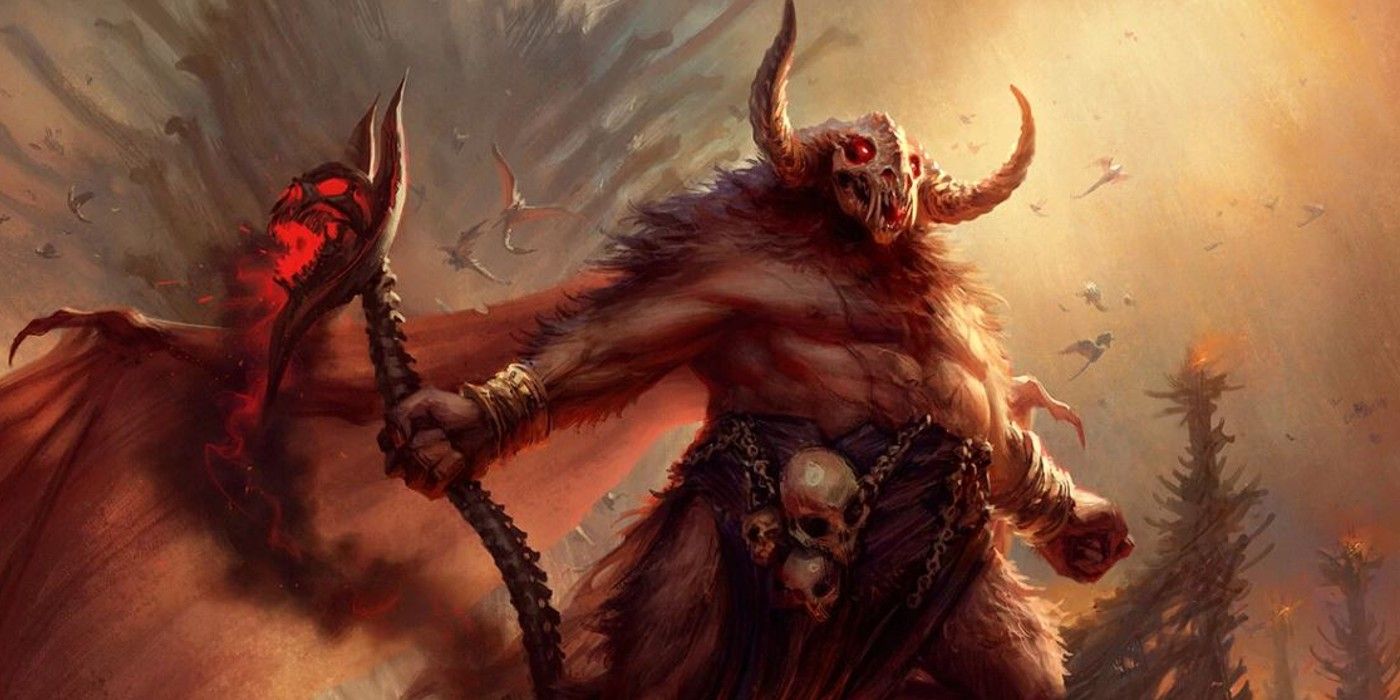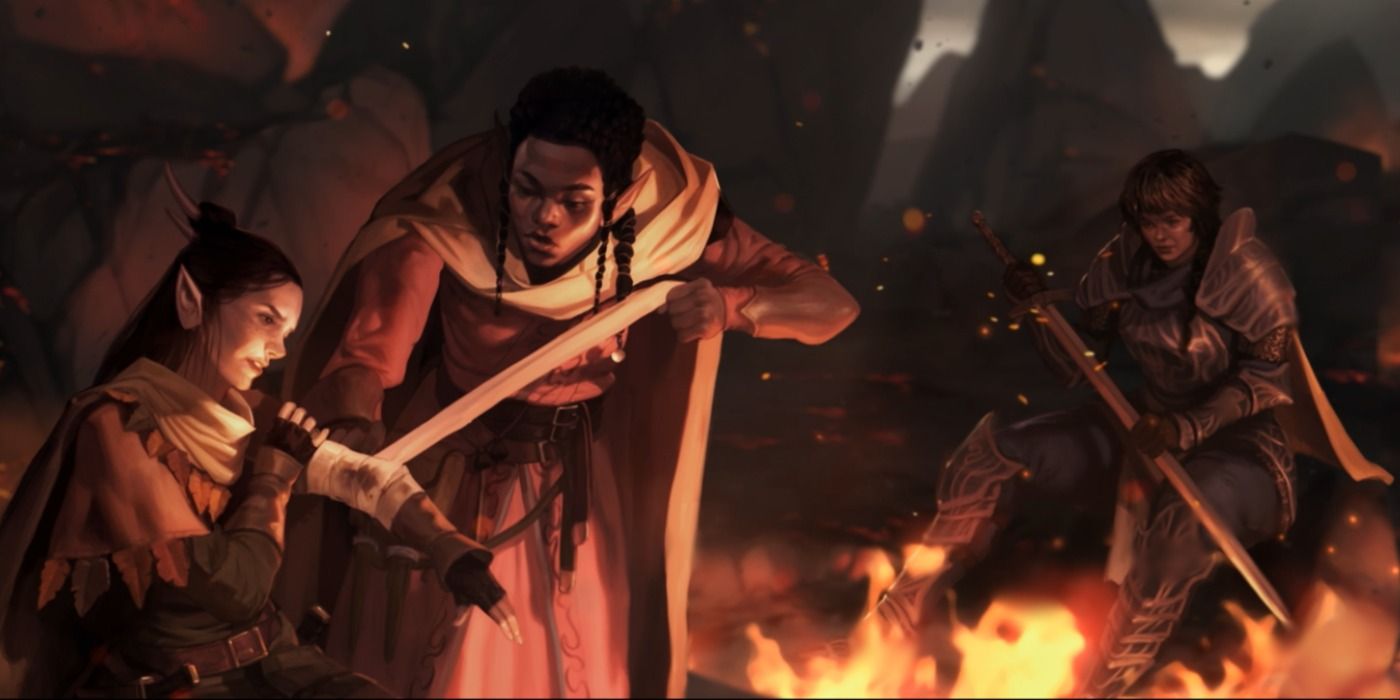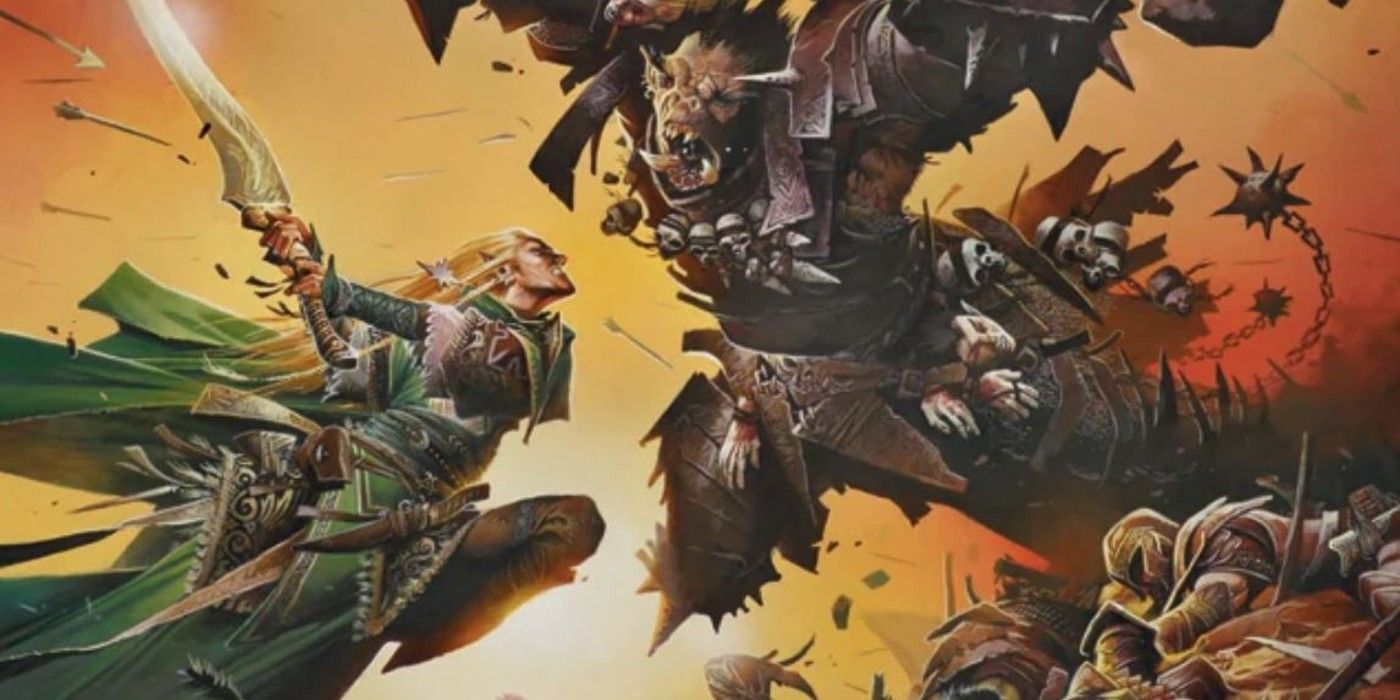A Dungeons & Dragons campaign offers one of the most rewarding forms of collaborative storytelling available but ending a long-running campaign can be a challenge even for experienced Dungeon Masters. Shorter D&D campaigns can last for a few weeks, while the longest might span years, as characters develop from low-level adventurers into the stuff of legends. Relatively few campaigns have proper endings, unfortunately, as their end is more often dictated by circumstance instead of the DM’s narrative design. Players might relocate or have schedule changes, a new edition of the game or a different game altogether might draw more interest, and the excitement from the early days of a campaign wanes over time. There are many reasons why most D&D campaigns end early, and few of those games receive any sense of closure.
Rather than allowing a D&D campaign to simply fizzle out, a DM should plan realistic story arcs with endpoints in mind from the outset. The DM should also be adaptable in cases where a game requires a sudden ending, such as with players becoming unavailable. A game they might have imagined playing out over the course of one to two years can still receive a satisfying conclusion a few months in. This requires a DM who understands narrative structure. While there are still those who enjoy old-school sandbox-style campaigns, such games rarely have satisfying endings. The group might explore a particular area until they are bored of it, then journey elsewhere to repeat the process. Some generous players might call the events that unfold in those travels a story, but it stretches credibility to call such events a narrative.
From the outset, a DM can make efforts to form a D&D group that will actually last. Running a proper session zero, and ensuring the group is on the same page with their goals for the game, certainly increases the odds of a successful long-running campaign. No matter how much effort goes into a game’s inception, all campaigns will end eventually. Beginning a campaign with clear goals for the scope and story of the game is vital, certainly. A DM might state they are running a game about new heroes going on their first adventures and maturing as adventurers, running from level 1 to 8. They might want to run a game about seasoned warriors, ranging from level 11 to 16. A clear goal can also help guarantee a better ending for the game. This does not have to ruin twists and surprises, as that goal could be as broad as unearth the terrible secrets of a homebrew campaign world.
The Effect D&D Heroes Have On The World Can Give An Ending Value
It is rarely wise to begin a campaign at level 1 with the intention of playing through level 20 (or beyond, for those who wish to explore Dungeons & Dragons’ best epic boons). That scope is simply too broad to realistically function for most groups. Character concepts that are exciting at a low level might grow stale months later, just as builds that are optimal for low-level play might lose their relevance in high-level games. A DM would be better served viewing a campaign as a series of novels instead of as one sprawling story. This ensures the game has satisfying climax points built-in, instead of a long-delayed conclusion. These smaller climaxes offer ending points along the way, should a game conclude sooner than intended. This style of pacing also keeps player interest more than an overly drawn-out, meandering campaign, which can aid a game’s longevity.
Understanding narrative is key for DMs who want their games to have satisfying conclusions. A novel in the middle of a series, or the season finale of an ongoing TV show, might end with a cliffhanger that builds interest in the next chapter of the story. Some DMs use narrative tricks to get D&D parties on track, but it is narrative structure that makes a campaign’s end satisfying. A campaign might end with a teaser, the notion that the heroes will go on to further adventures, but that endpoint should always feel like an ending, rather than an unfinished story. If a story is entirely event-based, without any underlying themes, then its ending can be hastened to bring a game some closure. If the goal of a game was to find a specific lost treasure, the DM could either allow it to be discovered in some unexpected place (perhaps on the bodies of another group of treasure hunters) or execute a time-skip to play out the conclusion. If there is a specific nemesis the party was formed to defeat, such as an evil emperor, the DM has similar options. An unexpected plot twist, such as a rival nation that wants to invade the empire, or a coup from within, could provide allies for the heroic rebels, allowing them to accomplish suddenly what might have taken years of struggle.
The alignment system of D&D should apply to NPCs as well as PCs, and a focus on NPC alignment can provide a basic theme to a game that might otherwise lack one. The impact the players have on the game world and its inhabitants can allow even a sandbox-style game to have a sense of conclusion. If the players did largely altruistic acts and left the towns and villages that they traveled through better off than when they entered, the game’s ending could highlight the hope and optimism they have fostered in the world. If the group took a more callous attitude towards NPCs, robbing and killing anyone who rubbed them the wrong way, a rise of evil-aligned NPCs could be the ending, as the world becomes more cynical, distrusting, and self-interested.
D&D Games With Themes & Narratives Offer More Satisfying Endings
Even D&D games with expansive preparation might not discuss the themes of a campaign, or its intended ending. In simple terms, “someone died” can be considered the start of a story, while “someone died, and that was very wrong” is the start of a narrative. Session zero is a valuable D&D tool, and it can lay out the scope of a campaign and its themes, as well as address questions about banning third-party or home-brewed rule content, and other mechanics-related questions. At the start of a campaign, the DM can present the premise of the campaign alongside its theme. A game’s premise could be something along the lines of, “a dark god will be resurrected in one year, and the player characters have been selected by their kingdoms to form a task force to stop it.” To transform a story into a narrative, and therefore a game with a more satisfying conclusion, themes are needed.
In a game with a world-ending crisis at its core, themes can be added with ease. A typical D&D campaign world, such as those in the mold of Lord of the Rings or the Forgotten Realms campaign setting, might have the many playable D&D races improve their camaraderie and empathy towards one another by banding together against a mutual threat. Such a game can end with a theme of “people’s differences can unite them instead of dividing them, as we all work together for a better world.” Conversely, in a highly cynical campaign world like Dark Sun, where most people live in misery, a theme that “life is only worth fighting for if it has hope” could emerge. The majority of the game’s NPCs might express indifference toward whatever crisis threatens to end their world, and even if the players ultimately stave off the cataclysmic threat, the thematic conclusion could be that “survival is not enough,” as the heroes go on to improve living conditions in the story’s epilogue.
Whether a D&D game is an old-school dungeon crawl with a kick-in-the-door style of play, or a highly experimental game adding the weirdest Disco Elysium rules to a D&D campaign, every campaign deserves a proper ending. Planning a realistic, restrained scope from the outset can help guarantee this. A game structured around multiple smaller goals offers more endpoint options, and a game with established themes allows any ending to feel more meaningful. Giving a campaign even one session to wrap things up is better than simply stopping; a rushed campaign ending is better than none at all. All good things come to an end, even a Dungeons & Dragons campaign, but every Dungeon Master owes it to themselves and their players to try to make the end of a game as exciting as its beginning.



